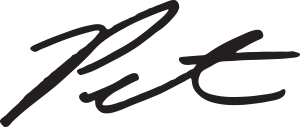Step 1 To Winning Today: Understand Burnout
Step 1 To Winning Today: Understand Burnout
Understanding Burnout
Winning never happens by accident.
Winning demands excellence and commitment. Winning over the long-term demands even more. It’s not more work, it’s more strategy and execution.
Winning that lasts demands the design of planned refresh and pivot cycles – and the avoidance of the Burnout-Disengagement Cycle.
So many of us today have entered and become trapped in the Burnout-Disengagement Cycle… but it doesn’t need to be this way. There is an answer to reversing the cycle and avoiding the plight of disengagement and the loss of talent.
**Also checkout what the World Health Organization has done to redefine and classify burnout as an “occupational phenomenon” HERE**
The Realities of Today
As high-achieving professionals and business owners, we have much in common: the need and desire to excel.
Our clients, customers, the public-at-large, positions, and livelihoods depend on it. It may take us 10, 20, 25 or more years to master our craft and make our name, but that is NOT what causes burnout. The pursuit of excellence and seeing our impact in serving others and making a difference is actually invigorating.
“Intervening factors, not the pursuit of excellence alone, causes burnout.”
-Peter C. Atherton
Prolonged work overload is one of the prime intervening factors that sneaks up on and affects many of us.
There’s always an important assignment and a key deliverable, as well as, something else to do to position us for our next opportunity. At some point, however, the assignment, pursuit, quarter, 100-day plan, and the year to both start and finish strong flows into another… and then another.
Before we know it, we live in a continuous harvest season with smaller and smaller fruit to bear and less taste to offer. Sound familiar? This leads us to burnout and into the Burnout-Disengagement Cycle. Disengagement is a reaction – conscious or unconscious – to separate and protect ourselves from the sources of overwhelm and exhaustion.
According to the 2017 Gallup State of the American Workplace report, 67 percent – two out of every three – of us are not engaged at work. This is not good… and, for many of us, this is made worse by a series of work frustrations and mounting personal frustrations from missing out on events and opportunities outside the office – both of which compound the Burnout-Disengagement Cycle.
Here is a figure from my book Reversing Burnout. How to Immediately Engage Top Talent and Grow! A Blueprint for Professionals and Business Owners that helps explain how these factors all work together:

The Burnout-Disengagement Cycle produces no winners. Over the longer-term, individuals, organizations, and leaders all lose. The losses also extend to everyone and everything that would otherwise be positively impacted by the consumed skills, talents, assets, gifts, experiences, passions, and know-how of those caught up in the cycle.
No matter the score or the circumstances we find ourselves, we postion ourselves to reverse (and prevent) burnout and disengagement. We don’t need to accept or allow burnout to our their fate. There are steps that we, as individuals, can take to create the conditions for winning at both work and life which I address in my book, but for this writing, I want to address leaders and organizations.
Winning Starts at the Top
Most of us today are over-committed, over-connected, and outright exhausted.
Top employees want to contribute value to their organizations and appreciate the opportunities with which they are presented, and they are often motivated by more than salary alone. However, when expectations perpetually escalate into a permanent environment of having to do more with less, and when their work increasingly begins to interfere with their ability to find balance at home and purpose in their mission, employees will eventually withdraw, disengage, and look to pivot away. The epidemic of professional burnout is real and needs to be more than just a wake-up call. Leaders need to begin to fear maintaining the status quo and take action.
New Approaches Needed to Win in the New
Workloads have increased for virtually all professionals across the board. Maybe the increase is due to disruptive forces in our industries. Maybe commoditization trends reduce our billings. Maybe it’s the escalating costs necessary to attract employees into our organizations and to retain our talent. Maybe it’s leaders who have lost touch with the realities of work and life today due to their own heavy workloads.
In a digital society where we are constantly plugged in and connected, the lines between our professional and personal lives have become increasingly more blurred. Employees no longer leave their duties behind when they leave the office, and they are repeatedly expected to maintain communication and productivity well into their once-sacred evenings, weekends, and vacations, especially if they seek to advance within an organization. Top employees often do not mind putting in the extra time when the work is truly needed and appreciated, but not even the most motivated individuals can sustain this pace on an ongoing basis.
When an organization’s culture ceases to acknowledge that not every season is a harvest season, when expectations for results only escalate, and when employees are expected to be “all in” all the time, burnout is inevitable and a future pivot is likely.
How much can we really take, especially when it seems to be continuously expected? The standard seems to have shifted. The norm is not normal… or sustainable.
Trying to sustain an unsustainable pace for too long is frankly poor leadership. We need a better plan.
Starting Within
The cost of employee turnover runs much deeper than an organization’s bottom line. When top talent defects from an organization, a ripple effect occurs that can also adversely impact innovation, productivity, employee morale, customer service, and organizational reputation. Savvy executives understand that their most valuable contributors are also those most likely to be coveted by others outside of the organization.
To mitigate professional burnout and attract new talent, leaders need to rely on the organization’s mission and reward systems and the intrinsic motivations and goodwill of its workforce. Leaders must go beyond superficial platitudes extolling the successes and goals of the organization and exhibit a genuine interest in creating a work environment that fosters an attentive approach to both financial and personal well-being and growth. During periods of peak workloads, top leaders enjoy a culture that values hard work while reciprocating flexibility through modern conventions such as working from home, job-sharing, flex schedules, and even extended time-off periods thereafter.
Breaking from antiquated and conventional corporate constructs requires courage and trust, and true leaders are gifted and appointed to serve others and help manifest a better future and a greater good. All levels of management – from C-suite executives down to team leaders – must be genuinely resolved to transforming the workplace to reverse burnout, engage top talent, and grow in order to be in a position to win.
As a leader, don’t let your people and organization lose by allowing burnout to develop or persist. Instead, take action to understand and begin to reverse it. Our pursuit and discovery of understanding and awareness is also foundational to the authenticity essential to inspiring and engaging top talent in the mission.
To your winning,

PS – Feeling burned-out, disengaged, or that you are missing out? Check out our Executive Coaching and Leadership & Management Development Programs: HERE
PSS – Are you feeling the pinch of overwhelm as a leader, manager, or high-achieving professional? Click HERE… and then just sit back and listen to one of the most important chapters in “Reversing Burnout” for FREE. Learn more about the realities of work and life today and how you can reverse and avoid the “Burnout-Disengagement Cycle”.

Pete Atherton
About the Author
Peter C. Atherton, P.E. is an AEC industry insider with over 30 years of experience, having spent more than 24 as a successful professional civil engineer, principal, major owner, and member of the board of directors for high-achieving firms. Pete is now the President and Founder of ActionsProve, LLC, author of “Reversing Burnout. How to Immediately Engage Top Talent and Grow! A Blueprint for Professionals and Business Owners”, and the creator of the I.M.P.A.C.T. process.
Pete is also the host of The AEC Leadership Today Podcast and leads The AEC Leadership Mastermind.
Pete works with AEC firms to grow and advance their success through modern and new era focused strategic planning, executive coaching, leadership and management team development, performance-based employee engagement, and corporate impact design. Connect with him through the contact link below.


